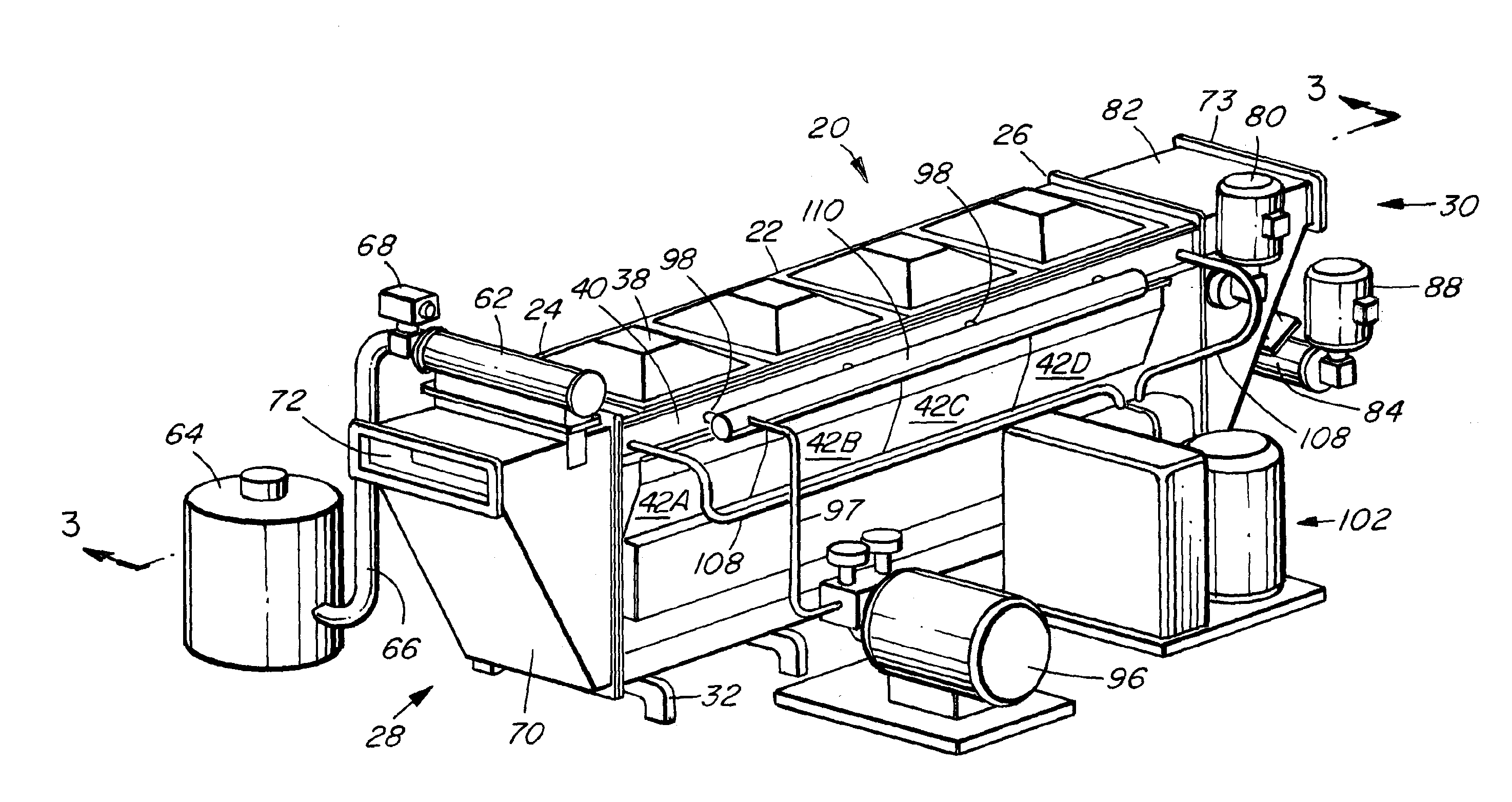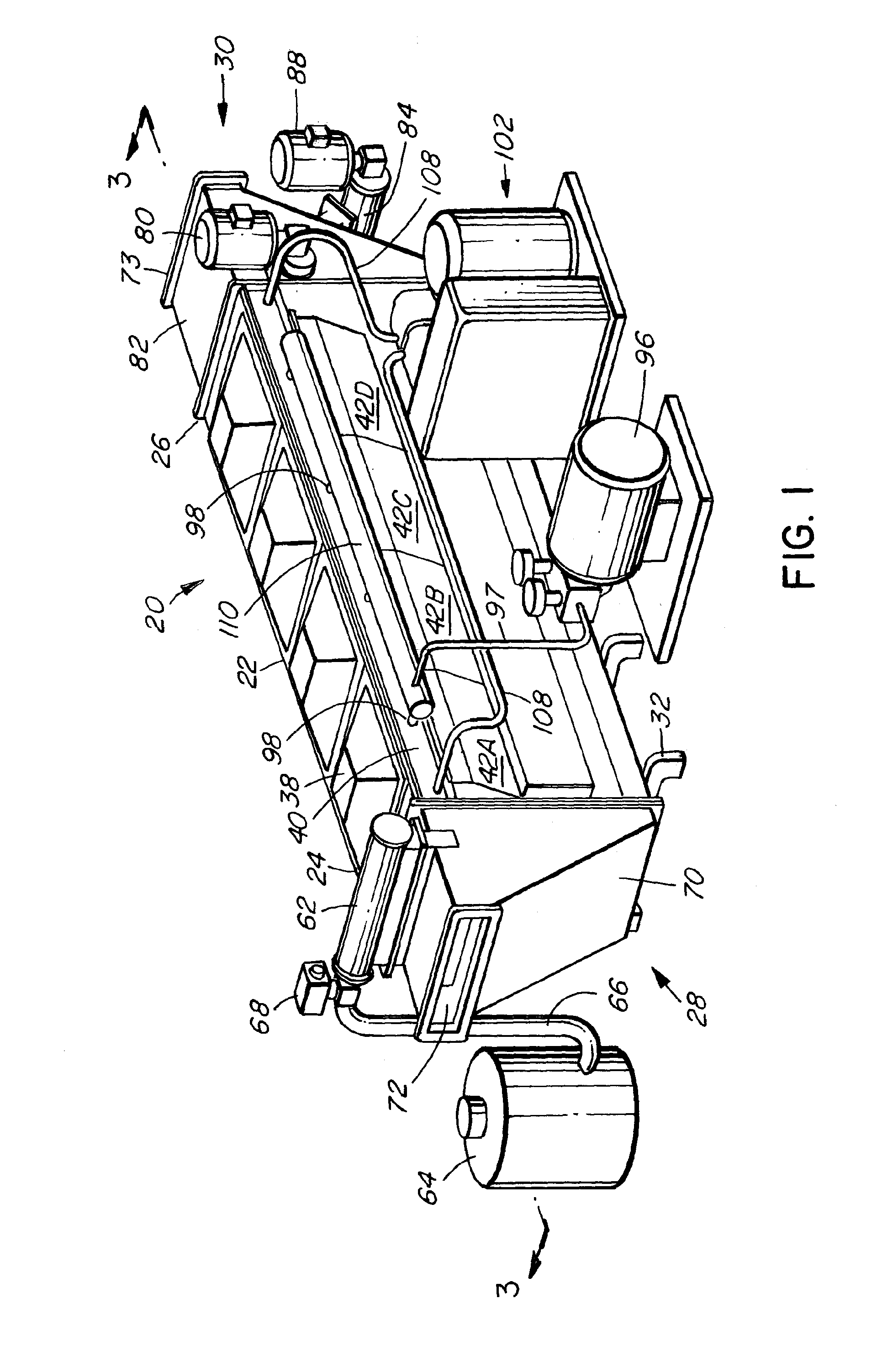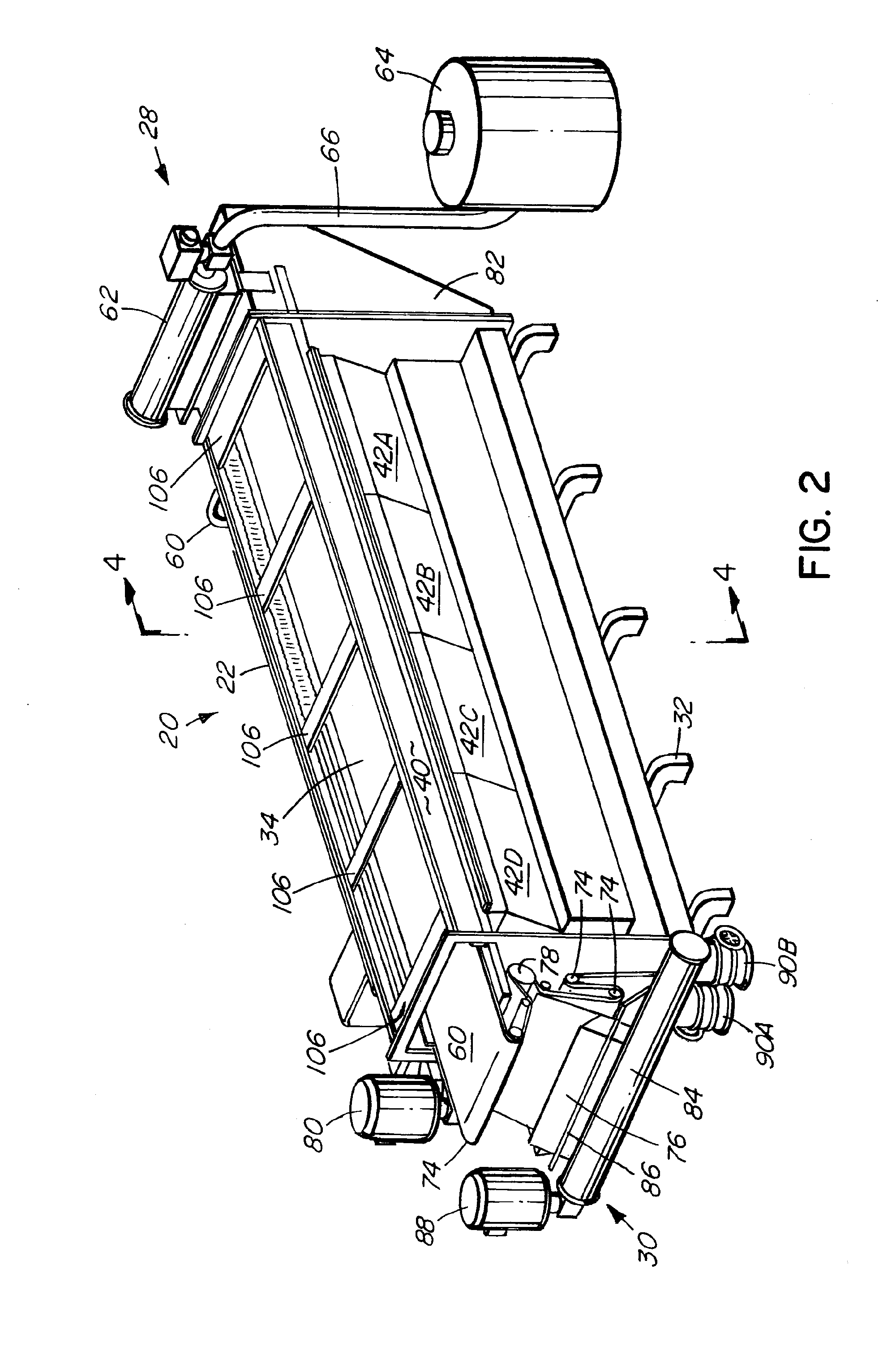Microwave vacuum-drying of organic materials
a vacuum drying and organic material technology, applied in the direction of antibacterial agents, lighting and heating apparatus, furniture, etc., can solve the problems of degrading the appearance and texture of products, slow air drying and expensive freeze drying, etc., and achieve the effect of improving the control of the drying process
- Summary
- Abstract
- Description
- Claims
- Application Information
AI Technical Summary
Benefits of technology
Problems solved by technology
Method used
Image
Examples
example 1
[0036]A dehydration apparatus in the form of the apparatus 20 described above has microwave generators each having a power output of 1,200 watts. The peak power within a given microwave generator module of four generators is accordingly 4.8 kilowatts. The vacuum system evacuates the apparatus to an absolute pressure of 0.1 Torr. Each microwave chamber has a height of 14.5 inches (36.8 cm), a length of 27 inches (68.6 cm) and a width (at the top) of 28 inches (71.1 cm). The spacing between the microwave generators (center to center) is 12 inches (30.5 cm) between adjacent rows and 6 inches (15.2 cm) between adjacent generators within a row. The conveyor belt is operated at a speed in the range of 0.01 to 1 centimeters per second.
example 2
[0037]An embodiment of the invention for drying organic materials in a batch mode was operated to dehydrate various foods, bioactive materials and materials in vials, in some cases using frozen materials. The final moisture content of the dehydrated material was measured.[0038](a) Bulk samples of beef chunks, brussels sprouts, green peas and egg whites were dried at a pressure of 35 Torr. The results are shown in Table 1.
TABLE 1AverageFinalDryingmicrowavemoistureSample and WeightTimepower (W)contentBeef chunks(874 g)130 min1532 1.02 + / − 0.061%Brussel sprouts(843 g)288 min9734.66 + / − 1.17%Green peas(759 g)287 min9464.59 + / − 0.61%Egg White(384 g)236 min14731.76 + / − 0.55%[0039](b) Frozen samples of bioactive materials, namely lipase and amylase, were dried at a pressure of about 0.15 Torr or less. The results are shown in Table 2.
TABLE 2AverageFinalDryingmicrowavemoistureSample and Weighttimepower (W)contentLipase (15% w / v)(337 g)9.5 hours12983.06 + / − 0.36%α-amylase(241 g) 12 hours1071...
PUM
 Login to View More
Login to View More Abstract
Description
Claims
Application Information
 Login to View More
Login to View More - R&D
- Intellectual Property
- Life Sciences
- Materials
- Tech Scout
- Unparalleled Data Quality
- Higher Quality Content
- 60% Fewer Hallucinations
Browse by: Latest US Patents, China's latest patents, Technical Efficacy Thesaurus, Application Domain, Technology Topic, Popular Technical Reports.
© 2025 PatSnap. All rights reserved.Legal|Privacy policy|Modern Slavery Act Transparency Statement|Sitemap|About US| Contact US: help@patsnap.com



